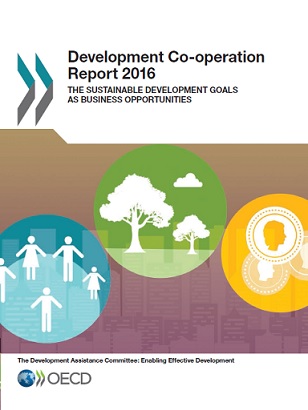Arellano, Cristina, Atkeson, Andrew, Wright, Mark, (2016), “External and Public Debt Crises”, NBER Macroeconomics Annual, Volume 30 Number 1 At the end of the first decade of the twenty-first century, the members of two advanced monetary and economic unions, the nations of the euro zone and the US States, experienced debt crises with spreads on government borrowing rising dramatically: in a short period of time, Californian spreads rose sixfold, Italian rose tenfold, Illinois fifteenfold and …Read More
The insurance sector and systemic risk
Gelos, Gaston, Valckx, Nico, (2016), “The insurance sector and systemic risk”, Voxeu, 27 July In recent years, the life insurance sector has become more systemically important across advanced economies. This increase is largely due to growing common exposures and to insurers’ rising interest rate sensitivity. This column analyses the evolution of the insurance sector’s contribution to systemic risk. Overall, life insurers do not seem to have markedly changed their asset portfolios …Read More
Making Global Value Chains Work for Development
Taglioni, Daria, Winkler, Deborah, (2016) “Making Global Value Chains Work for Development”, World Bank, June Economic, technological, and political shifts as well as changing business strategies have driven firms to unbundle production processes and disperse them across countries. Thanks to these changes, developing countries can now increase their participation in global value chains (GVCs) and thus become more competitive in agriculture, manufacturing and services. This is a paradigm shift from the …Read More
Credit booms and macrofinancial stability
Dell’Ariccia, Giovanni, Igan, Deniz, Laeven, Luc, Tong, Hui, (2016), “Credit booms and macrofinancial stability”, Economic Policy, Volume 31, Issue 86, 31 Μarch This paper explores several questions about credit booms and busts: When do credit booms occur? When do they end up in busts, and when do they not? What are the implications for different policies if curbing credit growth and/or mitigating the associated risks is an objective? We find that credit booms are often associated …Read More
Development Co‑operation Report 2016: The Sustainable Development Goals as Business Opportunities
OECD, (2016), “Development Co-operation Report 2016: The Sustainable Development Goals as Business Opportunities”, OECD Publishing, Paris, 18 July The face of development has changed, with diverse stakeholders involved – and implicated – in what are more and more seen as global and interlinked concerns. At the same time, there is an urgent need to mobilise unprecedented resources to achieve the ambitious Sustainable Development Goals (SDGs). The private sector can be …Read More
Optimal Adjustment Paths in a Monetary Union
Belke, Ansgar, Gros, Daniel, (2016), “Optimal Adjustment Paths in a Monetary Union”, CEPS Working Document No. 424, July Adjustment to an external imbalance is more difficult within a monetary union if wages are sticky. Periods of high unemployment are usually necessary to achieve the required real depreciation (internal devaluation). Gradual adjustment is usually recommended to distribute the output and employment cost over time. This paper takes into account that gradual adjustment also …Read More
The re-pricing of sovereign risks following the Global Financial Crisis
Malliaropulos, Dimitris, Migiakis, Petros M., (2016), “The re-pricing of sovereign risks following the Global Financial Crisis”, Bank of Greece, July How strong has been the effect of the Global Financial Crisis (GFC) on systemic risk in sovereign bond markets? Was the increase in credit spreads relative to triple-A benchmarks which followed the GFC the result of higher sovereign credit risk or the result of a re-pricing that reflected changes in broader …Read More
The EU’s problem-solving capacity and legitimacy in a crisis context: a virtuous or vicious circle?
Falkner, Gerda, (2016), “The EU’s problem-solving capacity and legitimacy in a crisis context: a virtuous or vicious circle?”, West European Politics, Volume 39, Issue 5, 16 June This article focuses on which mechanisms enabled the eurozone to escape from gridlock. At present, the EU is in a state of profound and multiple crises. Nonetheless, it managed to bring about a medium-term stabilisation of its banking system and economic governance, and a systemic implosion …Read More
Consumption Inequality
Attanasio, Orazio P., Pistaferri, Luigi, (2016), “Consumption Inequality”, Journal of Economic Perspectives, Volume 30, Number 2, Spring 2016 In this essay, we discuss the importance of consumption inequality in the debate concerning the measurement of disparities in economic well-being. We summarize the advantages and disadvantages of using consumption as opposed to income for measuring trends in economic well-being. We critically evaluate the available evidence on these trends, and in particular discuss how …Read More
Sovereign Debt Restructuring and Growth
Forni, Lorenzo, Palomba, Geremia, Pereira, Joana, Richmond, Christine J., (2016), “Sovereign Debt Restructuring and Growth”, IMF Publications, Working Paper No. 16/147, 22 July This paper studies the effect of sovereign debt restructurings with external private creditors on growth during the period 1970-2010. We find that there are bad and good (or not so bad) debt restructurings for growth. While growth generally declines in the aftermath of a sovereign debt restructuring, agreements that …Read More






